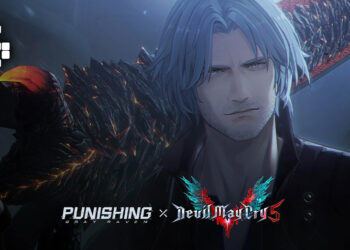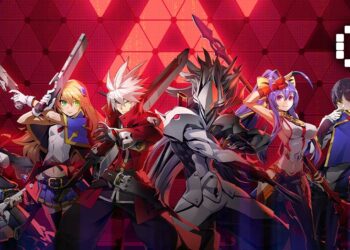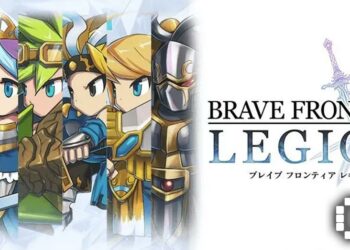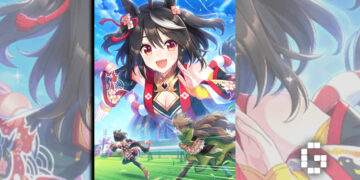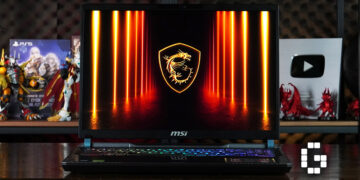The last time we covered DigiNavi, Bandai Namco revealed that they’ll be releasing a new Digimon Card Game. Not much details were given at a glace, but after doing some sleuthing, I was able to put together how the system works. Here’s EVERYTHING that we currently can tell about the Digimon Card Game.
The Chrono Clash Gauge System
The Digimon Card Game (referred to as DCG from now on) uses what is called the Chrono Clash Gauge system. Despite their posters claiming that it is a “brand new, revolutionary system”, it is actually using the same (or at least, similar) system from the Bandai card game “Chrono Clash”

How the system works is that each card has a cost. Playing a card will costs Time and will move the marker towards your opponents gauge. You can play as many cards as you’d like, but the moment the marker crosses the “0” and enters the enemy’s gauge, your turn ends. In the example above, I currently have 2 Time. I then play a 5 cost card, which would end my turn and my enemy would start his turn with 3 Time. Using the same example, I have 2 Time and I choose to play multiple smaller costing cards. I could play two 1-cost cards, which would leave the marker at exactly 0. It would still be my turn, and I am free to play another card. I play a 4-cost card and my turn ends with the enemy having 4 Time.
There are multiple IPs in the Chrono Clash system, namely Naruto and Boruto, Godzilla (here’s a link to the rulebook) and the upcoming expansion, Evangalion. However, these are in English and I have yet to see any Chrono Clash cards in Japanese (besides the Digimon previews). An interesting thing to note is that the distributors for Chrono Clash is Carddass, the same ones that distribute all Bandai card games.
The Rest of the Chrono Clash System
To win the game, you have to either attack the enemy while he has no Guardians or complete 5 Quests. Each player starts with 5 face down cards, which act as Guardians. You can declare attacks at the enemy’s cards or attack them directly. If they have a Guardian, the Guardian will flip over, protect them and fight your character to the death. If you attack an enemy while he has no Guardians, you win the game.
To complete Quests, you can place facedown cards under a character you control. While in this position, that character is Questing and cannot attack. The enemy can disrupt you by attacking the face-down card as though it were a Guardian. At the start of your next turn, if the character was undisturbed, you take the face-down card underneath your Questing character and you gain a Quest Point. If you have 5, you win the game.
The reason I bring this up, is because the terminology used in the cards shown so far seem to match the system almost exactly. While there have been no mentions of Guardians or Quests yet, there are clues that point towards that direction.
What we know about Digimon Card Game

Here we have the evolution system in play. When you evolve a Digimon, you stack their abilities as shown in this image above. In this case, you would have WarGreymon’s ability and MetalGreymon’s ability. WarGreymon’s text says “[On your turn] along with the evolution base, this Digimon gains [Security Attack +1] for every 2 evolution sources. When this Digimon {attacks} a {security} turn over +1 cards”. This likely shows that Security cards will replace Guardians in DCG, and when WarGreymon attacks a Security, he flips over 2 of them instead of 1. MetalGreymon’s ability says “[Once per turn] when this digimon eliminates an opponent’s digimon, place this Digimon in the attack state.” If you’re familiar with card games, this would be the Rested/Active/Untapped state, which means MetalGreymon could destroy an enemy Digimon and then attack again.
There’s also this page taken from V-Jump, which shows a description of the three colors.

Here, it describes Red (Agumon) as an aggressive color that has abilities that raises it’s DP (attack stat). As we can see from MetalGreymon and WarGreymon’s abilities, they are indeed very aggressive. Red has primarily Dinosaur and Dragon-type Digimon.
Yellow (Patamon) is able to manipulate the battlefield by reducing the enemy’s DP. They have Holy Beast, Fairy and Angel-types.
Blue (Gabumon) is said to control the fight by discarding enemy cards. It has primarily Beast, Beastman and Knight-types.
Another very interesting thing to note is that the yellow box reads:
[Tactics that change according to color!] Below the cards, pay attention to the color of the name box! Red, blue and yellow, the colors are based on the Digimon, and the effects they have are unique! If they share the same color, you can evolve them to the Digimon you like!
From the description, it seems that you can Digivolve as you please into higher forms, as long as they are the same color! If this is true, that would be very unique! This is fascinating because this means that you can sort of…craft a Digimon that has all kinds of different passives based on what choices you’ve made when Digivolving. For example, a Gabumon -> Seadramon -> WereGarurumon would have different passives than using Garurumon for the Champion stage (this assumes that Seadramon and WereGarurumon would be Blue cards).
And that’s everything that we have so far about Digimon Card Game. The game is set to release on April 1st. If you want more Digimon love, you can always check out our other articles here.

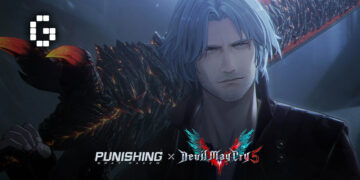
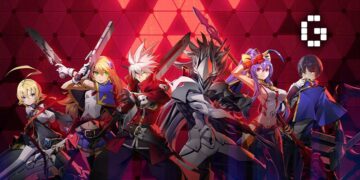
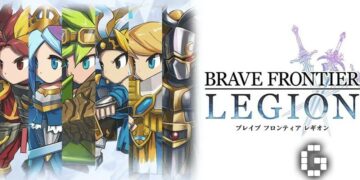







![[EXCLUSIVE] Creative Masterminds from Gearbox Software Reveal What Makes Borderlands 4 Worth the Wait](https://cdn.gamerbraves.com/2025/07/Borderlands-4-at-Bilibili-World-2025_Interview_FI-360x180.jpg)


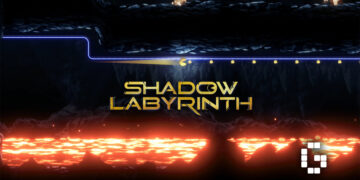

![[ASIA EXCLUSIVE] Bringing Back a Classic: Inside the Making of FINAL FANTASY TACTICS – The Ivalice Chronicles](https://cdn.gamerbraves.com/2025/06/FFT-Ivalice-Chronicles_Interview_FI2-360x180.jpg)



